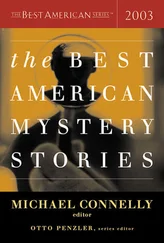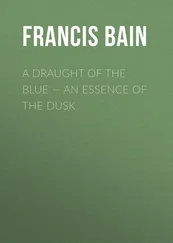And now the black bore of that very gun is inches from Dr. Gachet’s face. The artist holds it with two hands that tremble with rage, the barrel tracing paths across the doctor’s forehead and back, across and back. Dr. Gachet looks the artist squarely in the eye, as if there is no gun between them, and asks why he is so upset.
“The Guillaumin!” the artist says. “What else?”
The canvas in question: a portrait of a bare-breasted woman lying on a bed, which Armand Guillaumin traded for twelve bottles of Elixir to steady his own erratic heart. It is a lovely work — the artist was even moved to tears upon first beholding it — but Gachet has not yet had time to take it into Paris for Père Tanguy’s man to frame it.
“Sacrilege,” the artist spits. “Incredible. Nothing in this world has to tolerate more stupidity than a painting when it is regarded by fools. You are no better than the rest. You know nothing of art.”
“I know the most important thing of art,” Dr. Gachet answers. “And that is work . Stop behaving like an infant. Be a man, be an artist, and get on with your work .” The artist attempts a retort, but Gachet stands, interrupting him. “I have been very busy,” the doctor says, pointing a stern, steady finger into the artist’s chest. “Busy with many things, not least of which is your treatment.”
“You are a fraud,” the artist seethes. “I am insane to think you can help me.”
The doctor still refuses to look at the gun but imagines the artist’s finger softly pressing against the trigger, then lifting, pressing and lifting, pressing and lifting. The only thing between him and death? A few pounds of force and the indecision of a melancholic mind. He holds his ground, holds the artist’s gaze.
A standoff then, for a long, humid stretch of time, until a door slaps open and Marguerite emerges from the house with the doctor’s afternoon tea. Silently she sets the tea tray down on the garden table — the doctor watches the other man’s eyes following her — then goes to the artist and rubs broad reassuring circles on his back. The artist lowers the gun. He tucks it into the pocket of his blue twill jacket. At a glance from her father, Marguerite returns to the house, and the men sit.
Dr. Gachet produces a vial of Elixir from his satchel and hands it across the table. Obediently, the artist drinks. He lays his head on the table. “My attacks are returning,” he says. “I see no happy future at all.”
“Then you must paint more,” the doctor says. “You are an artist. That is your happy future.”
Dr. Gachet lies awake that night, tormented by suspicions that the artist has begun an affair with his sweet Marguerite, his only daughter. He flips through pages of the Goncourts’ Germinie Lacerteux , absorbing nothing. He wastes his morning pacing through the house and grumbling to himself; at noon he puts on his boots and goes looking for the artist outside. He stomps through the cemetery, along the edge of the wheat field, past Jomaron’s jumpy cows. Turning south, he enters a field of giant sunflowers and walks straight through it, yanking brilliant yellow heads off their stems as he goes and stamping the flowers into the dirt. Pollen clouds the air, and he is seized by fits of sneezing — ten, eleven, even twelve at a stretch. Sweating and panting, he climbs a grassy hill overlooking the field to rest. His mouth hangs open when he looks out over his path of destruction: the trail of headless stalks has left an emerald serpentine through the field of gold. It is a stunning scene, he thinks, one that must be painted. He races back to town, nose running, lungs constricted and burning, to find the artist. An inner voice tells him that a painting of this scene might be the cure for that poor, great man. And the sooner the canvas is completed, the sooner Dr. Gachet can set up his easel, mix his paints, and create its double.
9. At the artist’s deathbed (July 28, 1890)
Dr. Gachet dresses the wound, which is level with the edge of the ribs, just in front of the axillary line. The heart was not hit. “The bullet is inaccessible,” he tells the artist, “but you still might be saved.”
“Then I have to do it all over again,” the artist says.
He dies the next day.
When the artist’s brother arrives from Paris and kneels in prayer at the foot of the cot, Dr. Gachet takes out charcoal and paper and begins to sketch, his nerves ajangle, his hands excited. He sketches the sharp ridge of the artist’s eyebrows, the sunken cheeks, the knobby chin, the thin downturned lips; sketches as the artist instructed him to, quick as lightning, sheer work and calculation, with his mind strained to the utmost, like an actor on a stage in a difficult role with a hundred things to think of at once. He sketches with sadness and regret and loss and all the anger and agony that come with gazing at the faces of people you have failed. He signs his finished sketch P. Gachet , adding his name to the provenance of melancholy, to the provenance of art.
He will give the sketch to the artist’s brother, and in a few weeks will receive a letter from him. I must tell you that it gave my mother immense pleasure to see the drawing you did of my dear brother , it will read. Several people who saw it found it admirable . And Dr. Gachet will run out to the garden and toss the letter in the air and laugh in the purest joy and dance in circles with his arms outstretched while the chickens and ducks and rabbits and cats look on.
10. With the carpenter Levert (July 31, 1890)
The artist’s coffin is badly made. As the pallbearers carry it up the winding road, a foul-smelling, dark liquid drips from a crack where the green wood has curled away like a sneering lip. The liquid stains Camille Pissarro’s shoes. Émile Bernard turns away, gagging.
The next day, an enraged Dr. Gachet kicks open the door to the carpenter Levert’s shop. He pushes the wide-eyed man — much younger and brawnier than he — to the wall, seizes the front of his apron in a fist. “I should kill you,” he shouts. “You are a disgrace. An exceptional artist deserves exceptional craftsmanship.”
Levert, recovering from the surprise, wrenches the doctor’s hand from his apron and twists the older man, clamping his neck and arms in a firm but painless hold. “I am a fine craftsman,” Levert tells him flatly. “I am also a businessman, and I was paid only enough for cheap wood.”
The doctor fights against him, his legs wheeling and battering the carpenter’s shins, his shoulders straining in their sockets. Pinpoints of light in primary colors fleck his vision. He sees a hammer lying on a workbench and wishes he could reach it and bury the claw in the carpenter’s skull. Soon, though, he tires, and limp with grief, he begins to wheeze and sob. His tears and mucus glaze the carpenter’s bare arm.
After Levert carries him to the doorway and pushes him softly outside, Dr. Gachet turns to face the bigger man and taps his thumb against his own chest. “I promise you,” he says, his voice a corvid croak, “that this artist’s bones will not molder in any coffin of your making.”
A month later, thick boards of the finest Provence cypress arrive at his home, and he goes to work in the salon. The plans, which he has drawn himself — designed according to his own dimensions — are spread over the tea table. When he saws, his cuts are clumsy and crooked, and they leave jags and recesses. When he hammers, the nails bend; when he tries to correct them, they bend in new directions, until he angrily pounds them down and they protrude from the wood, gnarled as olive trees. Drifts of sawdust accumulate on the antique rug. Empty Elixir bottles clutter a corner of the room. He flings scraps of ruined wood through the open door to the garden, where they skitter and thunk on the patio bricks. Each night, his children come downstairs in their nightclothes and beg him to stop.
Читать дальше












